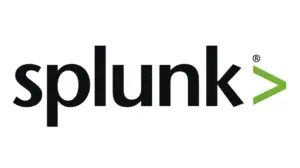 Protecting sensitive information has become a vital aspect of running any business, and one area that requires a high level of vigilance is payment security, especially for businesses that handle credit card (also known as cardholder) data. These businesses must adhere to the Payment Card Industry Data Security Standard (PCI DSS v4.0), complying with a set of stringent guidelines that is maintained by the PCI Standards Security Council (SSC). It’s not all work and no play however and as we’ll describe below, by following particular directives from the PCI DSS and employing TPSPs with an Attestation of Compliance (AOC), merchants really can “score goals and save money”.
Protecting sensitive information has become a vital aspect of running any business, and one area that requires a high level of vigilance is payment security, especially for businesses that handle credit card (also known as cardholder) data. These businesses must adhere to the Payment Card Industry Data Security Standard (PCI DSS v4.0), complying with a set of stringent guidelines that is maintained by the PCI Standards Security Council (SSC). It’s not all work and no play however and as we’ll describe below, by following particular directives from the PCI DSS and employing TPSPs with an Attestation of Compliance (AOC), merchants really can “score goals and save money”.
The PCI DSS applies to all businesses that accept, process, store, or transmit credit card (also known as cardholder) data. The DSS refers to those businesses as “merchants” or “assessed entities”, so we’ll use the term “merchant” in the rest of this article.
And we’ll use illustrations of rabbits as cheery visual analogies. Read on!
All businesses that accept, process, store, or transmit cardholder data (CHD) must meet the requirements of the PCI DSS, and meeting those requirements requires merchants to address up to 251 controls across 12 requirements. This can be challenging enough but merchants who utilise the services of a Third-Party Service Provider (TPSP) need also to consider :
The aim of these controls is to ensure that the merchant maintains explicit and important documentary records, while also emphasising separation of duties and a sense of shared accountability with its TPSP for preserving data security. But a consequence of these controls is that the merchant needs to manage its TPSPs in order to ensure the merchant’s ongoing compliance, and to help ensure the ongoing security of the merchant’s business.
As you can imagine (and as we’ll describe in detail below) complying with Requirement 12 can be a right pain, but the merchant’s compliance goals can be made A LOT less painful if they use TPSPs who are also compliant with the PCI DSS, especially if those TPSPs can prove their compliance by producing an Attestation of Compliance (AoC).
A Third Party Service Provider (TPSP) Attestation of Compliance (AoC) is a declaration, provided by the TPSP, that confirms that the TPSP has implemented specified controls from the PCI DSS. An AoC can be issued following a successful audit conducted by a Qualified Security Assessor (QSA), or created by the TPSP following a self-assessment against one of the Payment Card Industry (PCI) Self-Assessment Questionnaires (SAQs).
An AoC includes details about the TPSP’s name, the version of the PCI DSS they were audited against [2], which requirements were tested and found to be in place and which were not applicable. This comes in real handy when the merchant goes to report on PCI DSS v4 control 12.8.5, which states that a merchant must maintain information “about which PCI DSS requirements are managed by each TPSP, which are managed by the entity, and any that are shared between the TPSP and the entity.” If a TPSP can hand over an AoC, then complying with 12.8.5 is a doddle because the AoC provides the merchant with assurance that the TPSP has implemented all of the PCI DSS controls for which the TPSP has agreed to be responsible.
Of particular relevance here however (because of the PCI DSS-related aspect) is the 2013 Target (US) data breach, one of the most notable data breaches in history, which occurred because of a vulnerability and subsequent breach of the network of one of Target’s TPSPs. The attackers behind this attack exploited a weak link in the TPSP’s network to gain access to Target’s network, and then engineered an attack on Target that resulted in the theft of over 40 million credit and debit card records, as well as personal information of 70 million customers.
Estimates as of 2023 suggest that attack will eventually cost Target around $300M once all is said and done. Clearly then, if only from a financial perspective, it is important to ensure that TPSPs are not the weak link in the data security chain, especially because they may be responsible for almost any aspect of a merchant’s cardholder data environment, from payment processing to storage, and from WAFs to VOIP services.
The PCI SSC recognises this fact and so the DSS includes the note:
“Service providers are responsible for demonstrating their PCI DSS compliance, and may be required to do so by the payment brands. …There are two options for third-party service providers to validate compliance:
1) Annual assessment: Service providers can undergo an annual PCI DSS assessment(s) on their own and provide evidence to their customers to demonstrate their compliance; or
2) Multiple, on-demand assessments: If they do not undergo their own annual PCI DSS assessments, service providers must undergo assessments…
…The specific type of evidence provided by the service provider to their customers will depend on the agreements/contracts in place between those parties. For example, providing the AOC and/or relevant sections of the service provider’s ROC (redacted to protect any confidential information) could help provide all or some of the information.”
The PCI DSS game is a carrots and sticks affair.
And my, what sticks! The consequences of PCI DSS non-compliance can be severe and can result in hefty financial penalties (thousands to millions of dollars) levied by the card brands. But the monetary impact only scratches the surface. If a data breach takes place, merchants could face additional costs in the form of forensic investigations, mandated reporting, remediation activities, and possibly even litigation. And then of course there is negative impact on the merchant’s brand which, while not related directly to the PCI DSS, we see in current breach incidents such as those involving Latitude Financial Services, HWLE, Latitude, Medibank, and Latitude.
But don’t be a glum bunny because along with the sticks there is the TPSP AOC carrot… well, three big carrots, actually! Here’s how a TPSP AOC can make a great deal of merchant compliance pain just go away:
Compare that to the scenario where the TPSP does not have an AOC: As described in the PCI DSS, if the TPSP does not have an AOC then they must “undergo assessments upon request of their customers and/or participate in each of their customer’s PCI DSS reviews, with the results of each review provided to the respective customer(s)” Now, trust us; from a merchant’s perspective, this is a no-win situation! In fact it can be so bad that we’ve included a whole section on it below!

“Well heavens!”, said Mr Rabbit, “Who would have thought that one document could be so useful in so many scenarios?”
Verifying a TPSP’s AOC may seem daunting, but it’s a straightforward process when approached methodically. Here’s how a merchant would do it:
Pretty straightforward, right? But what if the TPSP has no AOC? Ah well, that’s a much darker tale… Read on, and see just how deep the rabbit hole goes!

“No AOC!”, said Mr Rabbit, “I think we’re in trouble now!”
As we noted above, sometimes a merchant will not be aware of the intricacies surrounding PCI DSS TPSP management and will find out (probably at assessment or reporting time) that their TPSP does not have an AOC. From what we’ve seen over 11-ish years, this is often a no-win situation for the merchant. As part of the monitoring a third party TPSP without an AoC, the merchant needs to review the controls that have been implemented by the third party TPSP and here is how that happens:
Merchants are ultimately responsible for ensuring the security of the cardholder data that they collect, store, process and transmit, but merchants can save time, cost and stress by choosing TPSPs that will collaborate in meeting this critical responsibility. And the easiest (cheapest and least time-consuming) way of doing this is to choose TPSPs who can produce an AOC that aligns with the merchant’s RAM and other TPSP contractual agreements.
Navigating the tricky landscape of payment-card security can be intimidating, but taking a proactive approach to maintaining compliance, both internally and with third-party providers, is key to preserving customer trust and business longevity.
Given the complexities and high stakes of non-compliance with PCI DSS, many businesses find it beneficial to seek professional assistance. At DotSec, we offer expert guidance and support in PCI DSS compliance. Our services range from explaining the nuances of PCI DSS to providing comprehensive compliance preparation and/or assessment.
DotSec can assist you in fostering and maintaining your customer’s trust and your business’ compliance with the PCI DSS. Contact us today for a thorough review of your PCI DSS procedures and to learn how we can bolster your data security framework. Let’s transform payment security from a painful burden, into a key strength of your business.
Go on! Reach out to DotSec for all your PCI DSS service needs. You know you want to!
Bye for now, and thanks for reading!
Practical and experienced Australian ISO 27001 and ISMS consulting services. We will help you to establish, implement and maintain an effective information security management system (ISMS).
DotSec’s penetration tests are conducted by experienced, Australian testers who understand real-world attacks and secure-system development. Clear, actionable recommendations, every time.
dotSec stands out among other PCI DSS companies in Australia: We are not only a PCI QSA company, we are a PCI DSS-compliant service provider so we have first-hand compliance experience.
Web Application Firewalls (WAFs) are critical for protecting web applications and services, by inspecting and filtering out malicious requests before they reach your web servers
Multi-Factor Authentication (MFA) and Single Sign-On (SSO) reduce password risks, simplify access, letting verified and authorised users reach sensitive systems, services and apps.
dotSec provides comprehensive vulnerability management services. And we analyse findings in the context of your specific environment, priorities and threat landscape.
We don’t just test whether users will click a suspicious link — we also run exercises, simulating phishing attacks that are capable of bypassing multi-factor authentication (MFA) protections.
DotSec’s penetration testing services help you identify and reduce technical security risks across your applications, cloud services and internal networks. Clear, actionable recommendations, every time!
dotSec has provided Australian managed SOC, SIEM and EDR services for 15 years. PCI DSS-compliant and ISO 27001-certified. Advanced log analytics, threat detection and expert investigation services.
We provide prioritised, practical guidance on how to implement secure configurations properly. Choose from automated deployment via Intune for Windows, Ansible for Linux or Cloud Formation for AWS.
Secure web hosting is fundamental to protecting online assets and customer data. We have over a decade of AWS experience providing highly secure, scalable, and reliable cloud infrastructure.
DotSec helps organisations to benefit from the ACSC Essential Eight by assessing maturity levels, applying practical security controls, assessing compliance, and improving resilience against attacks.
We have over 25 years of cyber security experience, providing practical risk-based guidance, advisory and CISO services to a wide range of public and private organisations across Australia.















